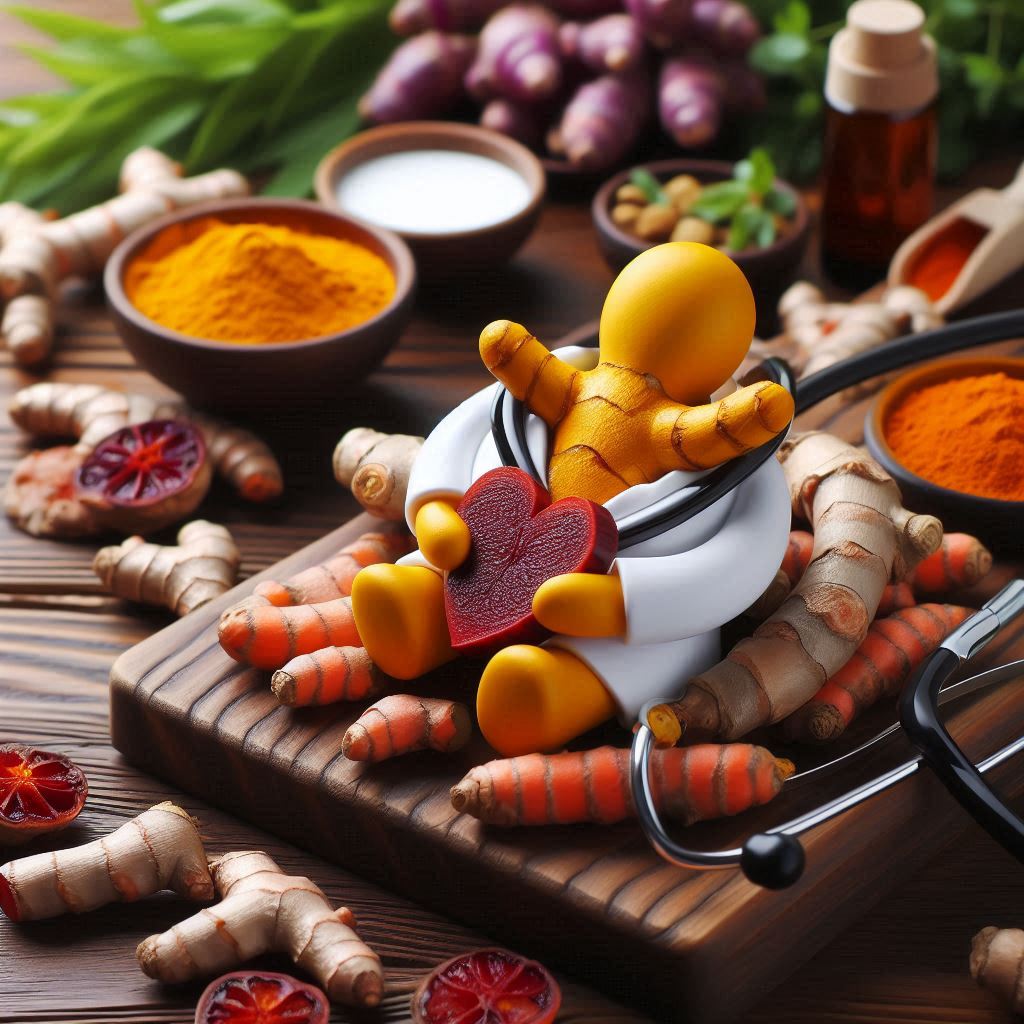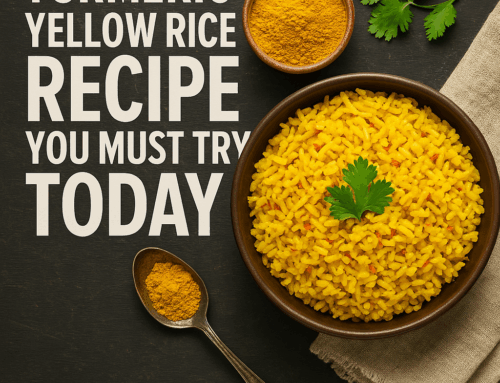
Turmeric, a vibrant yellow spice commonly found in kitchens worldwide, has long been celebrated for its culinary uses and medicinal properties. Derived from the root of the Curcuma longa plant, this golden spice has been a cornerstone of traditional healing practices like Ayurveda for centuries. While its anti-inflammatory and antioxidant benefits are widely recognized, one of its lesser-known abilities is its potential to stop bleeding naturally. Whether you’ve nicked yourself while chopping vegetables or experienced a minor scrape outdoors, turmeric to stop bleeding offers a simple, natural solution that’s both effective and accessible. In this article, we’ll dive deep into how turmeric can be used to halt bleeding, explore the science behind its effectiveness, and provide practical tips for safe application. By the end, you’ll see why turmeric deserves a spot in your natural first-aid arsenal and how it can empower you to handle minor injuries with confidence.
The purpose of this article is to deliver a comprehensive, engaging guide on using turmeric to stop bleeding. We’ll cover everything from its active compounds to step-by-step instructions, scientific backing, and even comparisons to conventional methods—all while ensuring the information is clear, actionable, and optimized for readers seeking natural remedies.
What Makes Turmeric Effective for Stopping Bleeding?
Turmeric’s ability to stop bleeding isn’t just folklore; it’s rooted in its bioactive compounds, particularly curcumin, the powerhouse behind its golden hue and healing properties. Curcumin is a polyphenol with a range of therapeutic effects that make turmeric a standout remedy for minor wounds. Here’s how it works:
- Hemostatic Properties: Curcumin can constrict blood vessels—a process known as vasoconstriction—which reduces blood flow to the injury site. This action helps the blood clot faster, effectively stopping bleeding. Think of it as a natural signal to your body to “close the gates” and start repairing.
- Anti-inflammatory Action: When you get a cut, inflammation kicks in as part of the healing process. However, too much inflammation can prolong bleeding. Curcumin steps in to calm this response by inhibiting inflammatory markers, allowing clotting to take priority.
- Antioxidant Boost: Free radicals generated during an injury can damage surrounding tissues and slow healing. Curcumin’s antioxidant properties neutralize these harmful molecules, protecting the wound and supporting recovery.
- Antimicrobial Defense: Open wounds are prime targets for bacteria, which can worsen bleeding and lead to infection. Turmeric’s antimicrobial qualities—effective against pathogens like Staphylococcus aureus—help keep the wound clean, creating an optimal environment for healing.
Together, these properties make turmeric a multi-tasking marvel. Unlike some remedies that only address one aspect of wound care, turmeric tackles bleeding, inflammation, and infection in one go, making it uniquely suited for minor injuries.
How to Use Turmeric to Stop Bleeding
Applying turmeric to stop bleeding is straightforward and requires minimal supplies—perfect for a quick fix at home or on the go. Below is a detailed guide to using turmeric effectively for minor cuts, scrapes, or even nosebleeds:
- Clean the Wound: Start by rinsing the affected area with cool, clean water to remove dirt, debris, or blood clots. Avoid harsh soaps or alcohol, which can irritate the skin and worsen bleeding.
- Prepare the Turmeric: You can use turmeric in powder form straight from your spice rack or mix it with a few drops of water to create a thick paste. The paste can be less messy and easier to apply, especially for small wounds.
- Apply to the Bleeding Area: For a cut or scrape, sprinkle a pinch of turmeric powder or dab the paste directly onto the wound. For a nosebleed, dip a cotton swab in turmeric powder and gently insert it into the nostril (use sparingly and avoid deep insertion).
- Press and Hold: Gently press the turmeric into the wound with your finger or a clean cloth. Apply light pressure for 1-2 minutes to encourage clotting and help the turmeric adhere.
- Cover It Up: Once the bleeding slows or stops, cover the wound with a sterile bandage or adhesive strip. This keeps the turmeric in place and protects the area from further irritation.
- Check and Reapply: After 10-15 minutes, check the wound. If bleeding persists, add more turmeric and maintain pressure. For nosebleeds, replace the swab if needed, but don’t overuse it.
Tips for Success:
- Use organic turmeric powder if possible to avoid additives or contaminants.
- Be prepared for temporary yellow staining on your skin or clothes—it’s harmless and will fade.
- Limit turmeric to minor injuries. For deep cuts, heavy bleeding, or wounds with embedded objects, skip the spice and head to a doctor.
This method harnesses turmeric to stop bleeding quickly while setting the stage for healing—an easy, natural approach you can try next time you’re in a pinch.
Scientific Evidence Supporting Turmeric’s Use for Bleeding
Turmeric’s reputation as a healing agent isn’t just anecdotal; modern research has begun to uncover why it’s so effective. Studies focusing on curcumin provide compelling evidence for its role in stopping bleeding and aiding wound repair. Here’s a look at some key findings:
- Wound Healing Acceleration: A 2017 study in the Journal of Wound Care found that curcumin enhances wound healing by boosting collagen production—a critical component of skin repair—and reducing inflammation. This dual action helps close wounds faster and minimizes bleeding time.
- Hemostatic Effects: Research published in the Journal of Ethnopharmacology tested turmeric extract on animal models and observed a significant reduction in bleeding time. The study linked this to curcumin’s ability to promote platelet aggregation and vasoconstriction, mirroring the body’s natural clotting process.
- Inflammation Control: According to a 2019 review in the International Journal of Molecular Sciences, curcumin modulates the inflammatory response by inhibiting pathways that prolong bleeding. This balance is vital for shifting the body’s focus from inflammation to repair.
- Antibacterial Power: A study in the Journal of Clinical and Diagnostic Research confirmed turmeric’s ability to fight bacteria like Escherichia coli and Staphylococcus aureus. By keeping wounds infection-free, turmeric supports uninterrupted healing and reduces complications that could worsen bleeding.
While these studies are promising, most have been conducted in labs or on animals, meaning more human trials are needed to solidify turmeric’s role in clinical settings. Still, the evidence aligns with centuries of traditional use, giving turmeric to stop bleeding a strong foundation in both science and history.
Comparing Turmeric to Traditional Methods of Stopping Bleeding
When bleeding strikes, most of us reach for familiar fixes like pressure or ice. But how does turmeric stack up against these tried-and-true methods? Let’s break it down:
- Pressure: The gold standard for stopping bleeding, applying firm pressure helps blood clot by physically compressing the wound. Turmeric complements this by adding a chemical boost—curcumin’s vasoconstrictive and clotting properties enhance the effect, potentially speeding things up.
- Ice: Cold constricts blood vessels and slows blood flow, making ice a go-to for bruises and minor bleeds. Turmeric achieves a similar vasoconstrictive result without the chill, plus it adds anti-inflammatory and antimicrobial benefits that ice can’t match.
- Styptic Pencils: These chemical sticks (often aluminum-based) are great for shaving cuts, quickly clotting blood by contracting vessels. Turmeric offers a natural alternative without the sting, though it may take slightly longer to work and lacks the precision of a pencil tip.
- Cloth or Gauze: Wrapping a wound with a clean cloth absorbs blood and encourages clotting over time. Adding turmeric to the cloth amps up the process with its healing properties, making it more than just a passive cover.
Pros of Turmeric:
- Natural and gentle—no harsh chemicals or discomfort.
- Multi-benefit approach (stops bleeding, fights infection, reduces swelling).
- Readily available in most homes.
Cons:
- Slower than some instant methods like styptic pencils.
- Staining can be a hassle.
- Not suitable for severe bleeding requiring urgent care.
For minor incidents, turmeric to stop bleeding shines as a versatile, holistic option. Pair it with pressure or a bandage for best results, but for emergencies, stick to medical intervention.
Potential Side Effects and Precautions
Turmeric is generally safe for topical use, but it’s not without quirks. Here’s what to watch out for:
- Skin Staining: That golden glow comes at a cost—turmeric can leave a yellow mark on skin, clothes, or countertops. It’s temporary on skin (fading in a day or two), but permanent on fabrics, so use an old towel or gloves if needed.
- Allergic Reactions: Rare, but possible. Some people may experience itching, redness, or a rash. Test a small amount on your forearm first; wait 24 hours to confirm no reaction.
- Irritation: Applying too much turmeric or leaving it on too long might dry out or irritate sensitive skin. Use sparingly and rinse off after bleeding stops if discomfort arises.
- Not for Major Wounds: Turmeric is no match for arterial bleeds, deep gashes, or wounds needing stitches. It’s a minor-injury MVP—know its limits and seek a doctor for anything serious.
- Medication Interactions: If you’re on blood thinners (e.g., warfarin) or have a clotting disorder, consult a healthcare provider before using turmeric, as it might amplify or interfere with your meds.
Safety Tips:
- Stick to small amounts—less is often more.
- Wash hands after application to avoid staining or spreading it to your face.
- If bleeding doesn’t stop after 15-20 minutes or signs of infection (redness, pus) appear, get medical help ASAP.
With these precautions, turmeric to stop bleeding remains a safe, practical choice for everyday mishaps.
Other Health Benefits of Turmeric
Beyond its knack for stopping bleeding, turmeric is a wellness superstar. Here’s a glimpse of its broader perks:
- Inflammation Fighter: Chronic inflammation drives conditions like arthritis and heart disease. Curcumin’s anti-inflammatory prowess rivals some over-the-counter drugs, offering relief without side effects.
- Antioxidant Shield: From pollution to stress, daily life bombards us with free radicals. Turmeric neutralizes them, potentially slowing aging and disease progression.
- Digestive Aid: It boosts bile production, easing bloating and improving fat digestion—perfect after a heavy meal.
- Brain Boost: Early research suggests curcumin may cross the blood-brain barrier, supporting memory and possibly lowering Alzheimer’s risk.
- Heart Health: By improving blood vessel function and reducing cholesterol buildup, turmeric supports a ticker-friendly lifestyle.
Sprinkle it in soups, smoothies, or teas to reap these rewards—or keep it handy for both wounds and wellness.
Conclusion
Turmeric to stop bleeding is more than a kitchen curiosity—it’s a time-tested, science-backed remedy for minor cuts, scrapes, and nosebleeds. Thanks to curcumin, this golden spice constricts blood vessels, promotes clotting, and wards off infection, all while soothing inflammation. Whether you’re applying it as a powder or paste, turmeric offers a natural, gentle alternative to conventional methods, with the bonus of being right at your fingertips.
That said, it’s not a cure-all. For severe injuries or persistent bleeding, professional care trumps any spice rack solution. But for everyday nicks and scratches, turmeric shines as a safe, effective fix. Curious to explore more? Dive into our other articles on natural remedies, or start experimenting with turmeric in your daily routine—your body (and your first-aid kit) will thank you.






